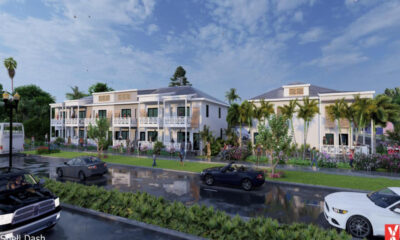Know
St. Pete commission backs tougher building standards in flood zones

Builders planning multifamily projects in flood zones in St. Petersburg would have to make them more resilient to storm surge and sea level rise under a measure approved by the city’s Development Review Commission.
But the elevated design standards could be moot, observers said, unless the city also allows development and increased density in the city’s Coastal High Hazard Area. A separate city commission voted against that idea last month.
Debate over how to use land in the 25 miles that make up the Coastal High Hazard Area now moves to the St. Petersburg City Council.
City officials have been grappling for years with land use in the Coastal High Hazard Area, a designation for areas that are below the elevation of a Category 1 storm surge line. New maps were created in 2016 that doubled the amount of city land in the area, and it now makes up 41 percent of the city’s geography and includes the Innovation District, USF St. Petersburg, the Skyway Marina District, much of 4th Street North and Dr. Martin Luther King Jr. Street North, Jabil headquarters and Echelon Town Center.
It also includes the entire Salt Creek area, where a Miami developer, Royal Palms Companies, is considering a 47.3 acre master planned redevelopment.
Current regulations bar increased density in those areas, keeping real estate developers from increasing the number of dwelling units per acre. City officials are considering changing those regulations to allow developers to propose multi-family projects, provided they meet a lengthy list of standards. Each individual project also would be subject to review.
The St. Petersburg Community Planning & Preservation Commission voted Dec. 10 to forward the plan to the City Council without a recommendation for approval, saying increased density in the Coastal High Hazard Area was not consistent with the city’s comprehensive plan. At its Jan. 7 meeting, the Development Review Commission only was asked to consider the tougher building standards, but the two issues are linked, said Don Mastry, a real estate attorney at Trenam Law who frequently represents developers before the City Council.
The tougher building standards “will make people feel good … but there won’t be any development if there’s not increased density. We need the increased density to pay for raising roads, new infrastructure, seawalls and so forth,” said Mastry, who was speaking personally. “We’re ignoring climate change. You’re going to feel good passing this but believe me, it’s meaningless unless there’s an increase in density.”
Mario Farias, a business consultant and homeowner in the Coastal High Hazard Area, said the plan would “give us a fighting chance to build a better South Side and complete a better city.”
But more work is still needed on the plan, said Bill Dahl, president of the Old Southeast Neighborhood Association. Dahl also was speaking personally.
“It’s not as simple as for or against the [Coastal High Hazard Area] amendments, development regulations and building code. More work is still needed. It’s still inconsistent with the comprehensive plan. Any increase in density, whether they’re in safer buildings or not, still puts people in harm’s way,” Dahl said. “This is not about development in St. Pete. When we talk about higher ground, when we talk about multi-modal corridors, there’s still plenty of room to grow this city and still have higher standards.”
The higher building standards are estimated to increase the cost of development in the Coastal High Hazard Area by about 7.25 percent to 11 percent of the total overall building cost, said Britton Wilson, a city planner.
No date has been announced for when the City Council will take up the plan.








TE R
January 9, 2020at1:31 pm
It was an interesting meeting. Several of us found it curious that the committee seemed to acknowledge a former codes inspector having some excellent points and concerns about loop holes in the new regulations,they decided to move forward with things as is.